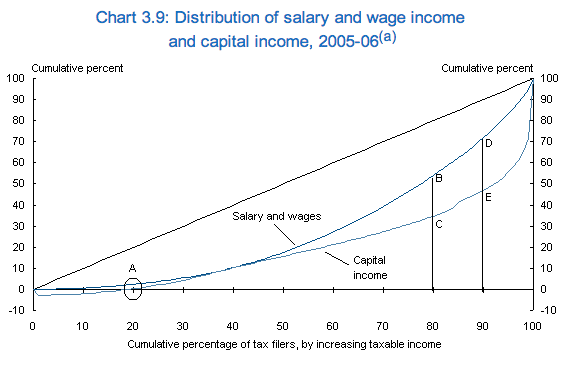I was in a seminar recently where the presenter explored some trends in income inequality in Australia, Canada and the US over the past century. While there was much to like about economists trying to unravel this issue, including the repeated reminders that representative agent models cannot deal with this problem, I had some niggling doubts that the whole story was being considered. I thought this presenter was sticking to only the issues deemed acceptable to discuss in the economics community, while ignoring the more important political issues.
First the good parts. Education is not a solution to income inequality. Canada and the US in particular are very highly educated countries, whose average educational attainments have soared for the past 30 years – the exact period that also saw huge growth in inequality.
It was acknowledged that the greater the degree of inequality, the easier it is to buy favours within political processes, further entrenching the income divide. It was nice to see economists raise these political points, but equally it highlighted how much of a disgrace it is that economists (and economic theory) play such a key role in capturing political processes for the 1%.
Now to the issue I believe is the crux of the income equality debate.
I was informed in the presentation that the inequality story of the past 20 years is not about the division of income between capital and labour. Labour incomes in the top 1% are increasing very rapidly too. Sure. But we know that CEO and executive pay is more closely linked to capital returns than ever before, following the broad acceptance of the principle of incentive pay and aligning executive pay to share market performance.
When I look at the data from the Henry tax review, I find that in fact that the distribution of income from capital is far more distorted towards the upper end than income alone.
I have borrowed the chart below from the Henry Review website. What we see is that the top 5% of income earners in Australia get half of total national income from owning capital assets. While they only get 15% of the wages.

We can even see that the bottom 20% are making capital losses (capital gains and dividends), highlighting the process by which the poor are becoming more dependent on labour income.
Many researchers do in fact note that decreasing labour share, and therefore increasing capital share, of national income has been a global trend since the 1970s. What few say however is that this is trend is a result of policy choices informed by neoliberal ideology. We certainly could have avoided this trend if we desired. It was simply a matter of different policy choices. And to reverse the trend is also very simple, should be desire to do so.
In a mere technical sense, reversing the trend couldn’t be easier. Off hand I can think of dozens of policies; from inheritance taxes, greater public transparency of personal income data (including trusts), land taxes, improving the power of shareholders in the determination of executive pay, grants of land or capital for public service, and more. The options are limitless.
The barrier to change is modern realpolitik. Those at the top have captured the political process, partly by capturing the media. Any change will entail a massive redistribution of wealth from those who bankroll the political parties, to those with the least resources, the least education and the least interest.
This is the heart of the matter, and one we repeatedly avoid discussing.
Please share this article. Tips, suggestions, comments and requests to [email protected] + follow me on Twitter @rumplestatskin